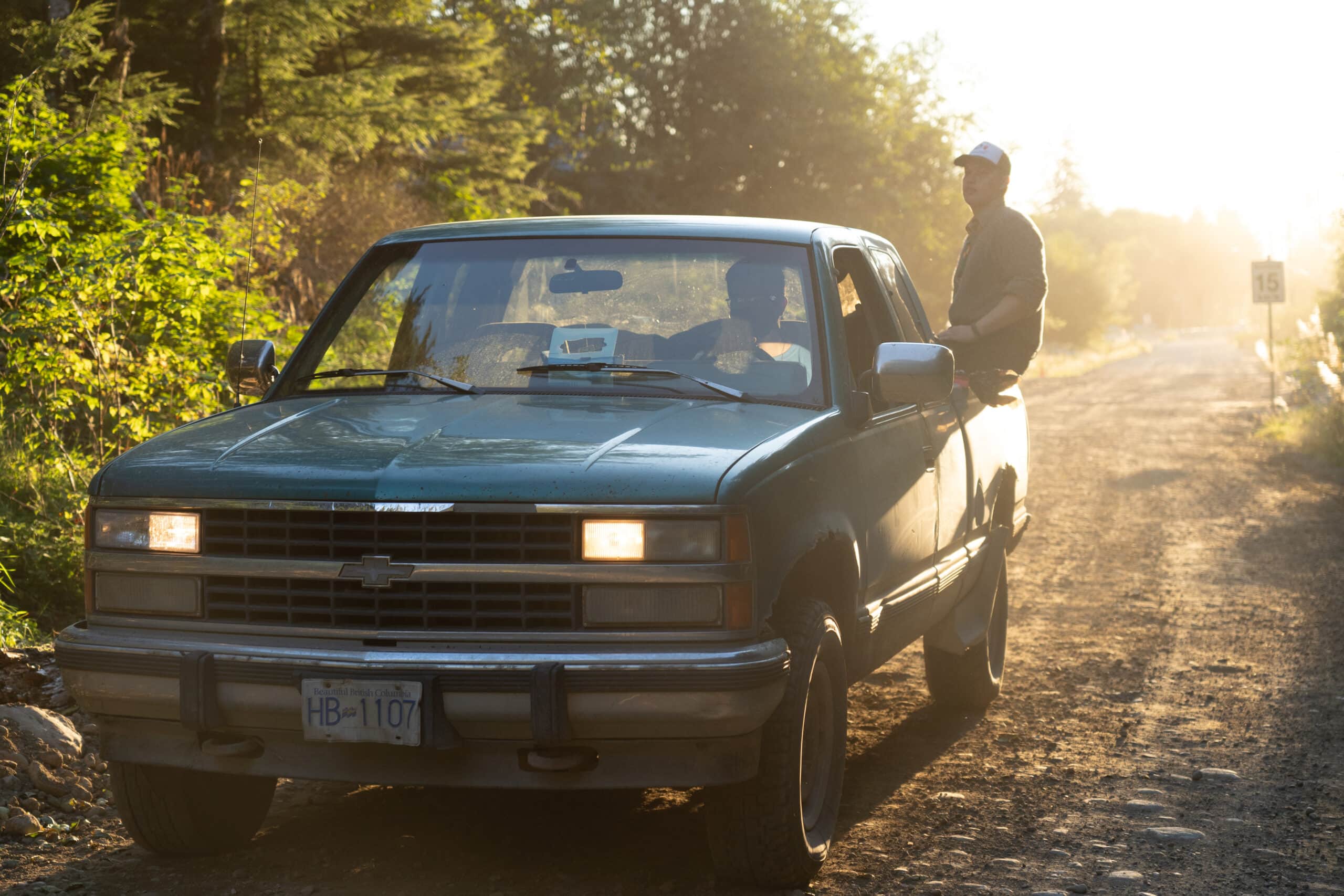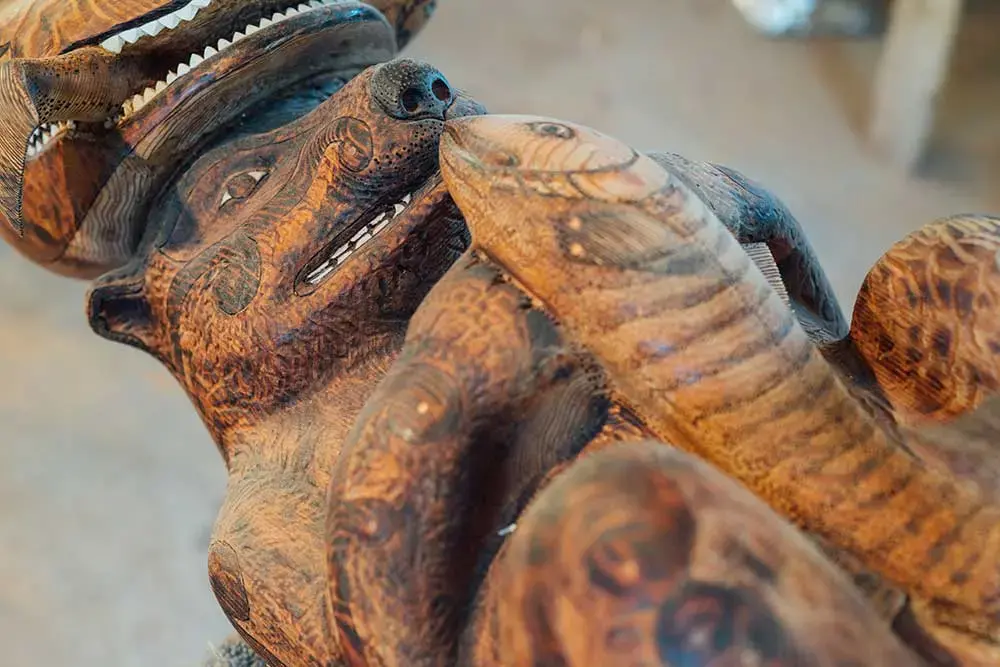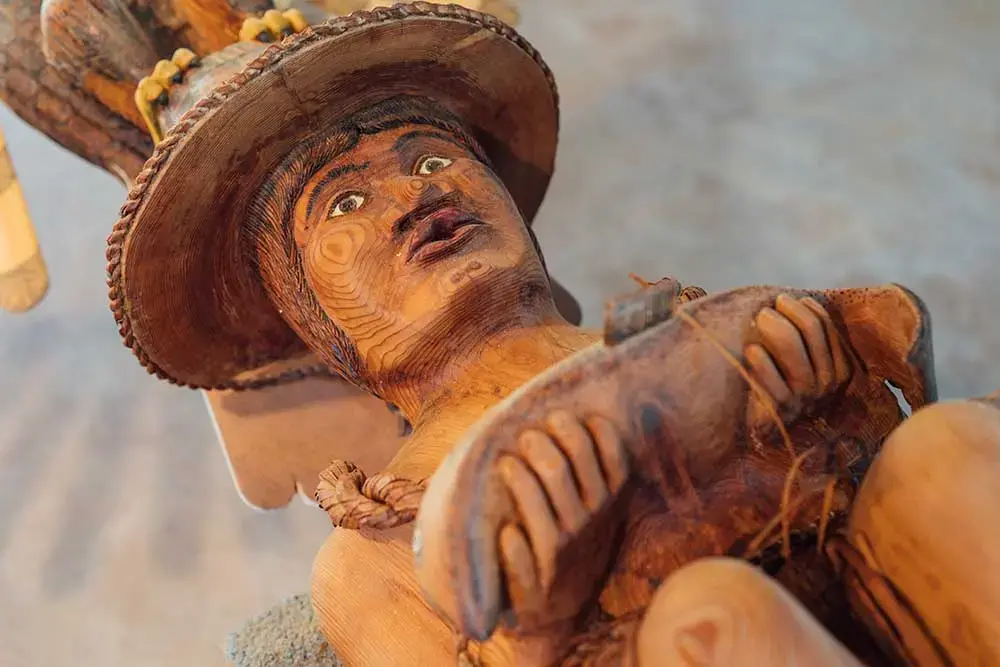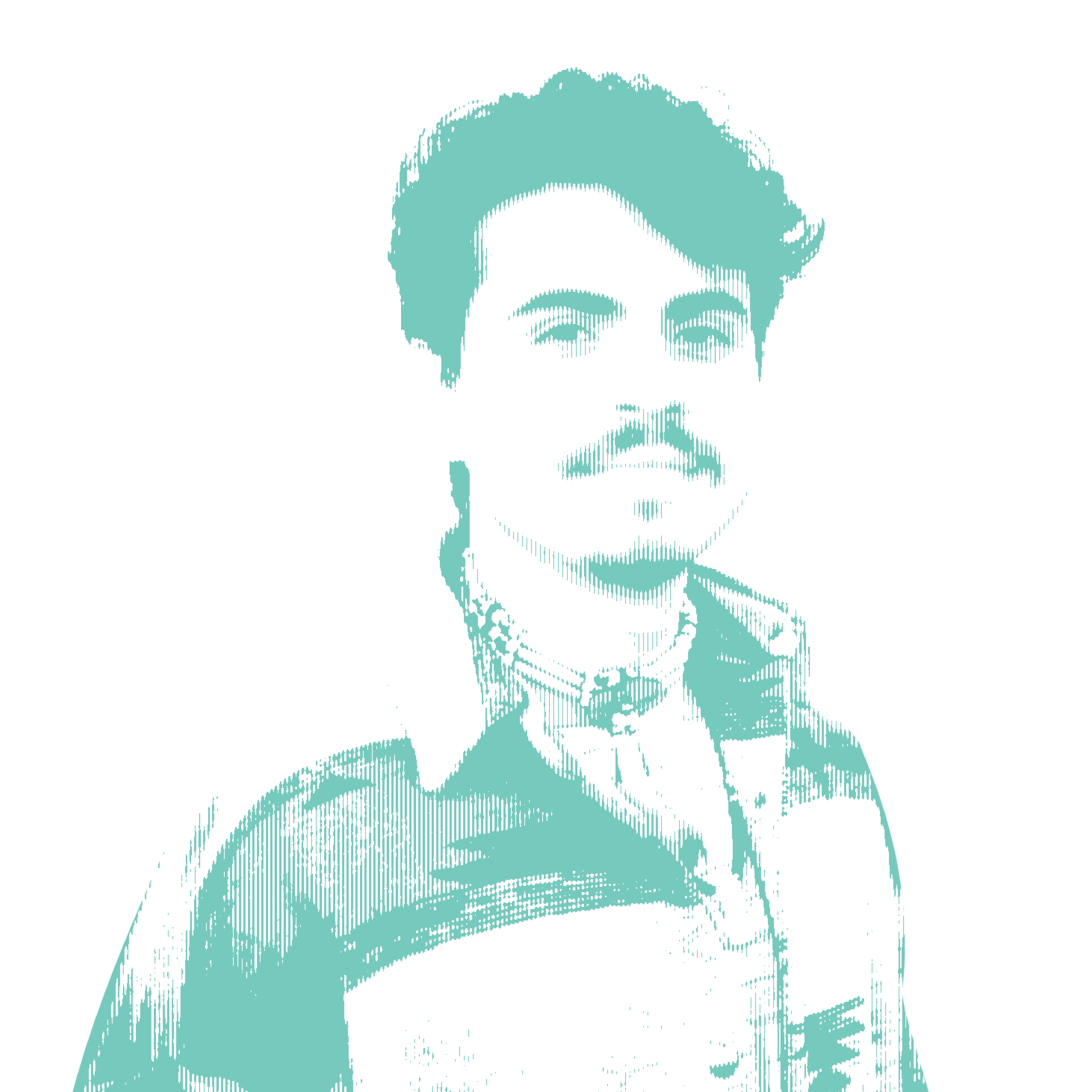
This story is produced in partnership with the Pulitzer Center and Humber College Storylab. To read the story in French, click here.
Frank Hanuse only hunted a grizzly bear one time. Skinning it, he felt like he was revealing a human body underneath the fur, like skinning a brother. He felt ashamed.
But it wasn’t the only time Hanuse — Fugg, to those who know him — killed a bear. In 1999 Fugg had to kill eight grizzlies in Wuikinuxv First Nation, the coastal village where he was born. “Those bears were getting dangerous,” he says. “The ones that I had to put down were the ones that were starting to try to break into people’s houses, trying to squeeze in through their windows and push their doors in.”
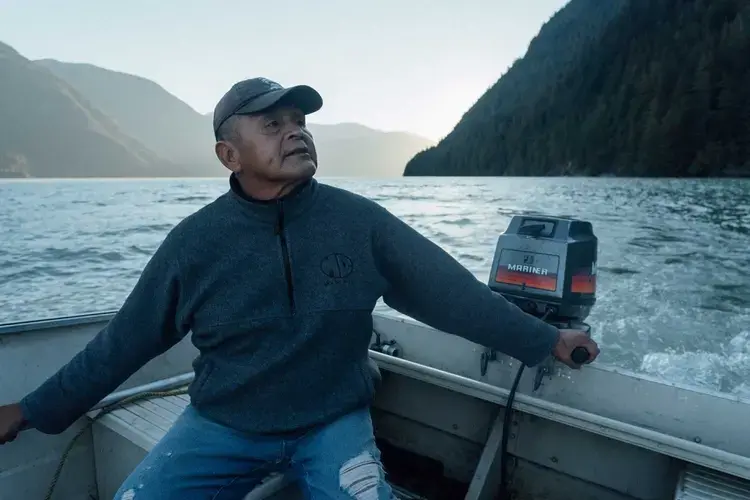
After killing the bears he observed tradition, giving the animals offerings of tobacco and asking them for forgiveness. But that year was a disturbing break from the Wuikinuxv traditional lifestyle, one that has always found space for grizzlies.
“I felt so sick to my stomach,” Fugg says. “But what else could you do?”
The events in Wuikinuxv that year have continued to echo into the present for the people who live there, changing the way they look at the forest around their home and how they think about their neighbouring bears. It’s also changed the way they look at the river that flows through the village and the fish within it; the sockeye salmon had always fed the people and bears of Rivers Inlet, but after years of declining runs, 1999 marked a low point. A lack of salmon drove the bears to desperation, and their deaths.
And now, with fish numbers slowly climbing, the memory of those lean years is inspiring a groundbreaking new take on fisheries management: putting the bears first, ahead of the First Nation, the sport fishers, and the commercial industry, all of whom want their share of the bounty.
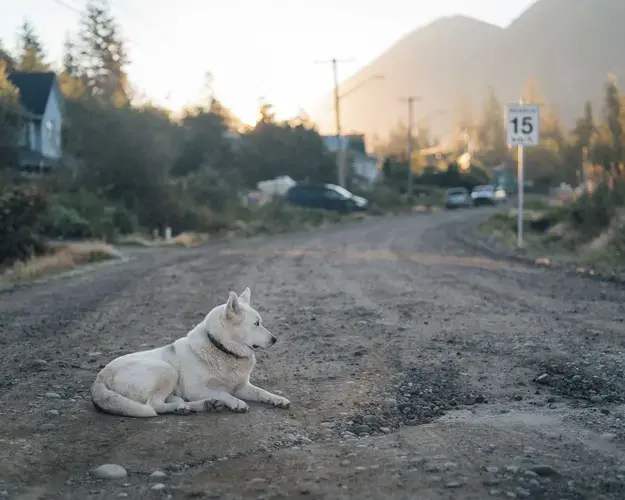
“The premise is quite radical,” explains Dr. Megan Adams, a biologist with the Raincoast Conservation Foundation who has spent the first decade of her career working with the people of Wuikinuxv to answer some of their most pressing questions. “There’s this very tangible connection between food security for bears, food security for people, and safety.”
Located on the central coast of BC on a small, low-lying strip of land next to the Wannock River, between the end of the silty, narrow Rivers Inlet and Owikeno Lake, the community cohabited with grizzly bears for millennia. The bears eat the four local species of salmon, which, four times a year, run the short distance up the Wannock River and into the streams that feed the lake.
Bears eat practically side by side with the people who live there.
People fished for salmon, and very occasionally hunted the bears. Children were told to leave the bears alone and expect the same in return.
“That was never a problem before the sockeye crashed,” Dr. Adams says.
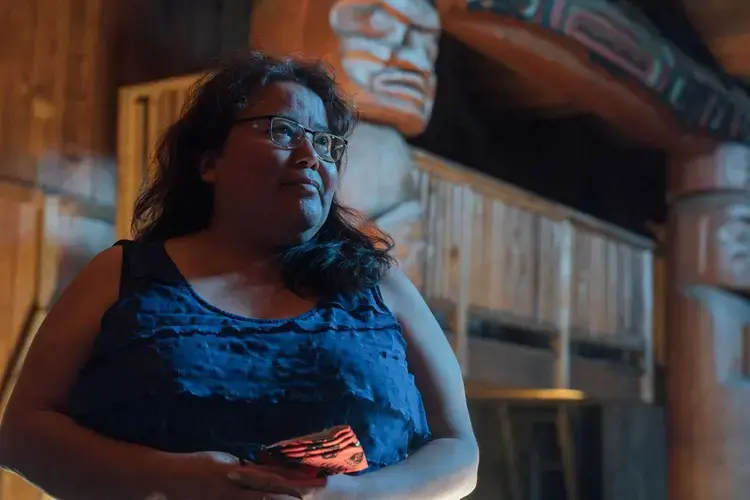
The Crash of the Century
The river system adjacent to the village of Wuikinuxv once supported millions of sockeye salmon, the kind of fish population that legends are made of.
“You could walk across the river on them,” boasts Patrick Johnson, who grew up in the village. Wannock River was the second- or third-largest run in the province, after the Fraser and Skeena Rivers. Salmon swimming home through Rivers Inlet would first encounter milky glacial silt suspended in the inlet many kilometres from the river’s mouth. Travelling through that haze, they would make their way up the river just five kilometres or so past Wuikinuxv Village to Owikeno Lake. There, the salmon would split off for any of the 10 salmon-bearing streams that drain into the lake.
But in 1999 just a few thousand fish turned up, less than one per cent of historic highs. Ask five people in Wuikinuxv why 1999 was such a bad year for the fish and you’ll get five different answers, all plausible; in fact, it’s likely that a gauntlet of different stressors, working together in a complex system, sank the fish numbers.
“They don’t often just stack on top of each other,” explains marine cumulative effects researcher Melissa Orobko. “One stressor can make another stressor worse.”
But to understand any of them, you have to first understand how sockeye salmon live and reproduce.
Every winter, sockeye begin their lives in the gravel under their home rivers, hatching from their eggs with just a small yolk sac to keep them alive until spring. They quickly absorb those nutrients and then develop the predatory diet they’ll maintain for the next five years, first living on tiny zooplankton and invertebrates in fresh water for one to three years. Eventually they migrate downriver to the ocean, where they grow into their full size, eating bigger prey, like other fish and squid, alongside the plankton.
By their fourth or fifth year, most sockeye are ready to return to their river of origin. Smelling their way home using trace chemicals in the water, they make their way upriver. When they arrive, the females dig little nests in the gravel with their tails, then drop their eggs inside. The males compete to fertilize the eggs on the river bottom. Then, within a few days, they die — and before or after this happens, they’ll be eaten by the bears, eagles, wolves, gulls, and other animals that await their arrival each year.
At every stage of this process, something has gone wrong for the Wuikinuxv sockeye, and it started long before 1999.
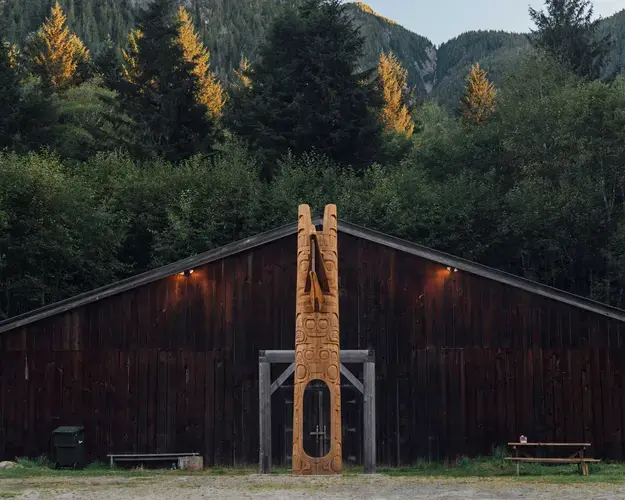
An Ancient Relationship
Carver George Johnson is putting the finishing touches on a stunning pole when I visit his carving shed. It’s built around the concept of “four,” a number that has great resonance in Wuikinuxv culture. For each of the four seasons, there’s a species of salmon. For each of the four local species of salmon, there’s an animal that catches it, just one of which is a human. At the bottom of the pole, clutching a sockeye, is a grizzly bear. And swirling up from the ground, along the haunches of the bear, is a pattern that connects it to the soil and the land.
In eating the salmon, the bears bridge the gap between the deep ocean and the treetops, dragging the wriggling essence of one ecosystem into another.
As much as 80 per cent of the nitrogen in BC’s coastal trees is brought there by salmon, by way of their decomposing flesh and bones, tossed aside into the woods once the bears have eaten the fattiest parts. For the Wuikinuxv grizzly bears, this makes up 60 to 70 per cent of their diet.
In return for enriching the soil, the trees pay the salmon back with ample shade to keep the streams cool. They stabilize the ground with their roots, keeping the streams free of silt that can choke the fish eggs, as well as the debris that can block their passage. The trees also modulate the flow of water into the streams, keeping them running more steadily throughout the year.
Other plants benefit from the salmon as well; the number of salmonberries, for example, is directly linked to the amount of salmon decomposing nearby. Those berries, too, feed the bears.
The cycle is as old as time. But it wasn’t just the bears that noticed the annual explosion of good, easily available nutrition on the BC coast.
The First Nations of the West Coast, like the Wuikinuxv, ate salmon fresh, smoked, and dried year-round. With sustainable practices and small villages, they kept the runs strong.
But after contact, colonization did there what it has done across the continent: it made abundant resources scarce through intensive exploitation. The late 19th and early 20th centuries saw an explosion of fish canneries in BC, with at least 13 appearing in Rivers Inlet to exploit its spectacular salmon runs.
“Within recent memory, people from Wuikinuxv have seen their fish mismanaged to record lows,” says Dr. Chris Darimont, professor at the University of Victoria and science director for Raincoast Conservation Foundation. There aren’t scientific records going back to before the mid-20th century — the tree-ring analysis that revealed how much the trees depend on salmon is limited by the length of cores that can be pulled out of the giant, ancient trees — but biologists suspect that the inlet could have been home to as many as several million a year.
The canneries were relentlessly effective, with mechanized factory lines, huge workforces, and fleets of boats. Fugg was among those who worked in the canneries and watched the crash happen. “It was a steady drop,” he says. “Just a steady decline to today.”
By the time the last of the local canneries closed in 1957, sockeye salmon stocks had dropped, but the decline would continue for another half century. Part of the reason for the continued decline could be a loss of genetic diversity, as the population was driven lower and lower by fishing. That left the fish vulnerable to changes in their environment.
For 7 of the 10 salmon-bearing streams above Owikeno Lake, “changes” would be a massive understatement. What came during the era of industrial logging was a ransacking of the watershed for timber, with no regard for the sensitive streams under the salmon-fed canopies. Two of the logging camps were so large they had their own airstrips.
“The last time we had really good runs of fish was the 1950s, 1960s, around the time when all the logging started happening at the lake — so part of it is degradation, part of it is climate change,” says scientist and Wuikinuxv band councillor Jenn Walkus, a young woman who has played many roles within her community, including, during the pandemic, acting as the emergency operations coordinator in charge of approving my visit.
“The lake just can’t keep up; the regime just shifts,” she says.
When the fish left their home rivers, they faced a barrage of new threats. The young fish need to grow quickly to avoid being eaten by something bigger; that’s their best chance of survival. To grow, they depend on a food supply in the inlet beyond the Wannock River, but climate change has complicated this. The annual cycles of algae and plankton that the fish depend on for food have been thrown off: their timing has been altered, to disastrous effect.
The fish numbers have increased in recent years, reaching into the hundreds of thousands, and now the First Nation fears that at any moment Fisheries and Oceans Canada could reopen the commercial fishery and start the destructive cycle all over again. They, along with scientists, are skeptical that the ecosystem can support the scale of fishing it once did.
“It’s not too far from where it was, but it may never be what it was again,” says Dr. Brian Hunt, a biological oceanographer at the University of British Columbia who studies that all-important timing. “The ocean is just changing so dramatically that we may never get back to the productivity that we’d want to see.”
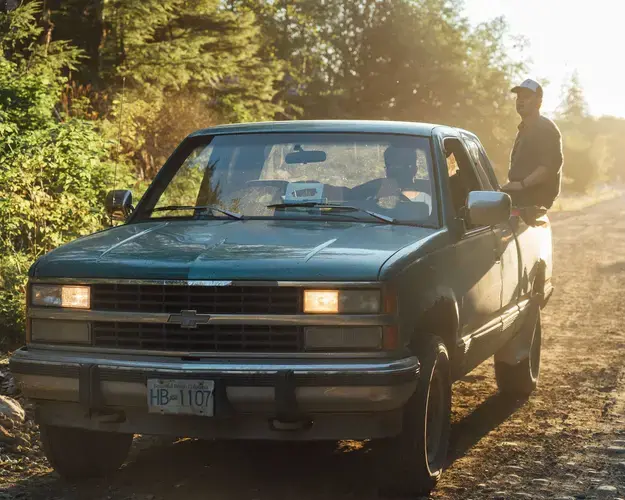
Hunting for Answers
Adam Nelson pulls the band’s truck into the small landfill less than a kilometre from the village, as he does three times a week to keep bear attractants out of people’s homes, and honks his horn to avoid startling any nearby bears. He and Corey Hanuse toss the village’s garbage bags into the landfill and wait. Minutes later a large grizzly is tearing the bags apart.
An electrified fence around the landfill, installed at great expense, lasted three days. The bears pulled it open like a can of sardines and it hasn’t been repaired. Later, someone stole the batteries. The bears have become accustomed now to the easy food the dump has on offer, and most days it’s possible to find them snacking amongst the detritus. Better there than roaming the village.
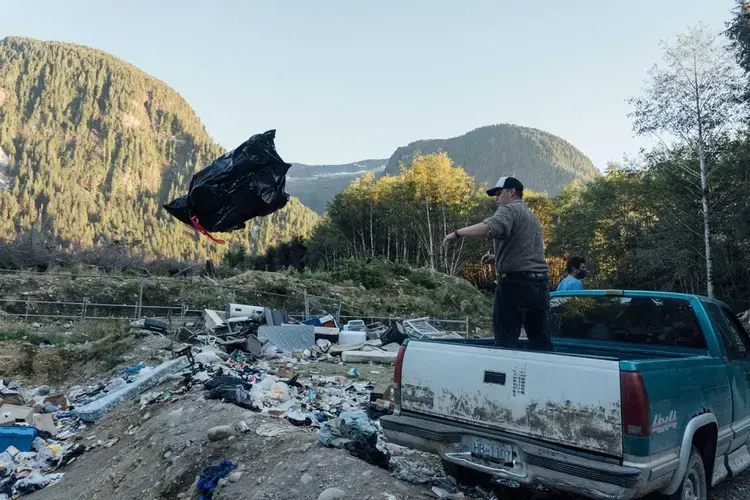
The bears have become accustomed now to the easy food the dump has on offer, and most days it’s possible to find them snacking amongst the detritus. Better there than roaming the village.
For the bears, the lack of salmon was a catastrophe on top of many others.
The flat land around Wuikinuxv village, once an old-growth rainforest, has been logged into something entirely different, a dense thicket that Jenn Walkus calls a “green desert.”
“There’s no berries,” she says. “There’s nothing the bears can eat because it’s all juvenile trees, so they’re all interlocking, and there’s no light that reaches the forest floor.”
That additional lack of food forces the bears into the dump and into the village, where they are at greater risk of harming people or being shot.
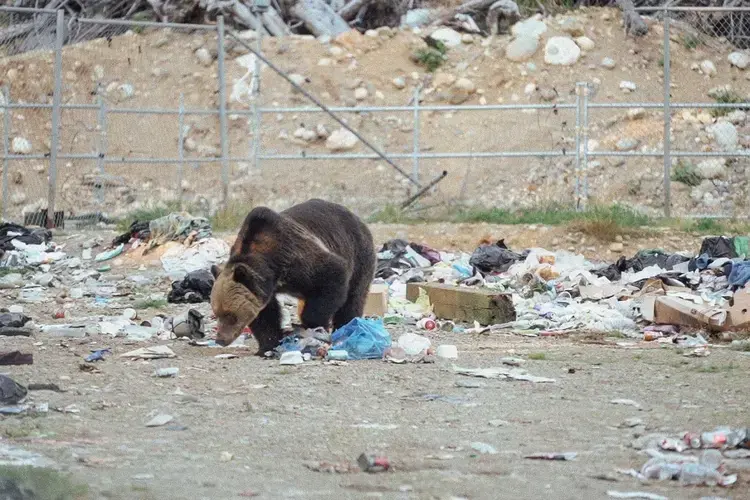
Shooting grizzlies was long something the Wuikinuxv fought. For decades, trophy hunters would come to Rivers Inlet to claim a bear for its hide and claws. The First Nation opposed the practice, but the provincial government granted permits anyway. Grizzly trophy hunting only ended in the territory in 2017, after the Wuikinuxv took it upon themselves to gather sufficient data to convince the government that its benefits were exaggerated: trophy hunting didn’t employ the number of people or produce the economic returns that had been claimed.
Now the First Nation is trying to do the same for the salmon: studying the ecosystem for guidance on how to manage the fish.
“The government likes to say that they govern based on the best available science,” Walkus says. “But the government only funds the science that it wants to see.”
When Johnny Johnson caught two sick-looking salmon over the summer, jaundiced and oozing, the First Nation sent them away to a lab to be analyzed. The fear is that the fish may have picked up piscine orthoreovirus, a pathogen that’s common in fish farms and can be passed to wild fish. But monitoring the salmon that come in is just the start.
Wuikinuxv wants to answer a simple but pressing question that could upend how fish are allocated: how many salmon do the bears need?
“I don’t think we see ourselves as separate from the system that nature has, so much as we’re part of it,” Walkus says. “When we only plan for people in the river, then everything else that eats those fish [is] underserved.”
The way the government manages fish stocks is solely human-focused, not accounting for the needs of other species, like bears or wolves, or the ecosystem writ large.
“They just don’t think about things like that, at least not in the current management regimes,” she says.
Science could provide the best answer to keeping the looming fishing boats at bay, and the First Nation is gathering data to make the case that considering the bears in management decisions could restore balance to the ecosystem.

A Vision of Balance
Dust hangs suspended in the air, illuminated by headlights that blaze out across the gravel pit. The lights pick up a crumpled, furry body whose bones are poking out through the drying skin.
No one told me there was a grizzly bear rotting next to the dump. It was shot maybe a month before, after coming too close to the village, too often — as good a reason as any to dispose of a bear, but the people don’t seem proud of the decision.
The carcass is a reminder that bears remain a threat even today; accordingly, there are a few things I need to know before I step outside the Wuikinuxv lodge, according to the facility’s manager. “If you smell something, it’s a bear,” Judy says. “If the dogs are going crazy, it’s a bear.”
With instructions to get inside the nearest house in an emergency — the small cluster of houses in the village are always unlocked for this exact purpose — Judy hands me a metal, spring-loaded tool the size and shape of a pen with a plastic cylinder screwed onto it. It’s a “bear banger,” a tiny explosive like a firework intended to scare away curious bears. I am to carry it around any time I’m outside.
I run into Johnny Johnson outside the lodge. He laughs at my puny protection. “That won’t even scare them anymore,” he says. Johnson’s opinion on the matter is an educated one; not only did he grow up in Wuikinuxv, he survived a violent mauling a decade ago.
On July 4, 2011, Johnson was picking berries for his aunt when a mother bear, frightened by the community’s dogs, stumbled across him. It wasn’t a chance encounter; the bears had continued to encroach on the village even after the cull in 1999.
“Grizzly bears are more prevalent now in Rivers Inlet than they’ve ever been in the 25 years that I’ve been here,” a fishing lodge owner told CTV News the day that Johnson was attacked.
The frightened sow attacked immediately. He can still smell her breath, and feel the scrape of her teeth against his skull where she left a spiderweb of scars. She came back three more times, and after he had blacked out from the struggle, she buried him.
Johnson woke hours later in the pitch black, buried under a pile of brush. He managed to make it to Fugg’s house on the edge of the community. He spent seven weeks in the hospital in Victoria, then he came back to Wuikinuxv. Outside his home in the middle of town, bears still bounce his garbage can off the walls at night, trying to get some food. He’s had to chase them away with a fire extinguisher.
He doesn’t blame the bear for what happened, nor did it change his opinion of the animals. “They’re not cold-blooded killers,” he says. When the food dwindles, the bears get pushed into conflict with humans. In that conflict, someone is always going to lose.
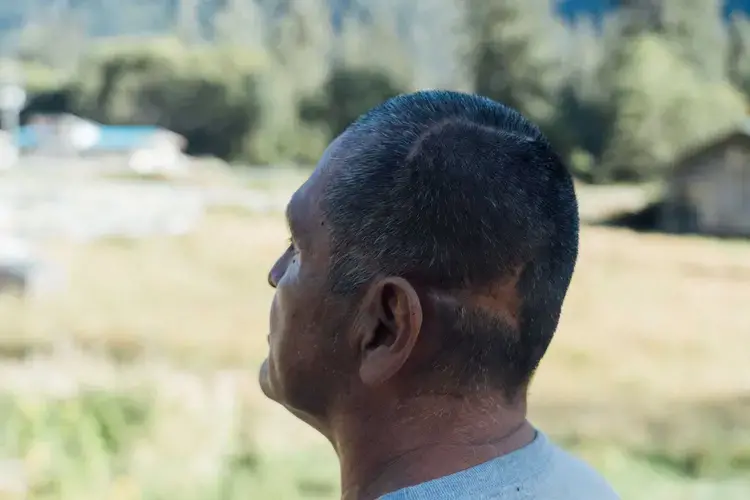
Johnny’s brother, the carver George Johnson, affirmed this delicate balance when he made his totem pole, which he laid out around a particular distribution of resources. The eagle, which announces the start of the season with its shrill whistle, gets one salmon. The orca, deep in the inlet where so much hardship has already occurred — and more is yet to come — gets one. The bear, bridging the land and the sea, gets one. And the human, with all his ingenuity and resources, gets one. Just one.


